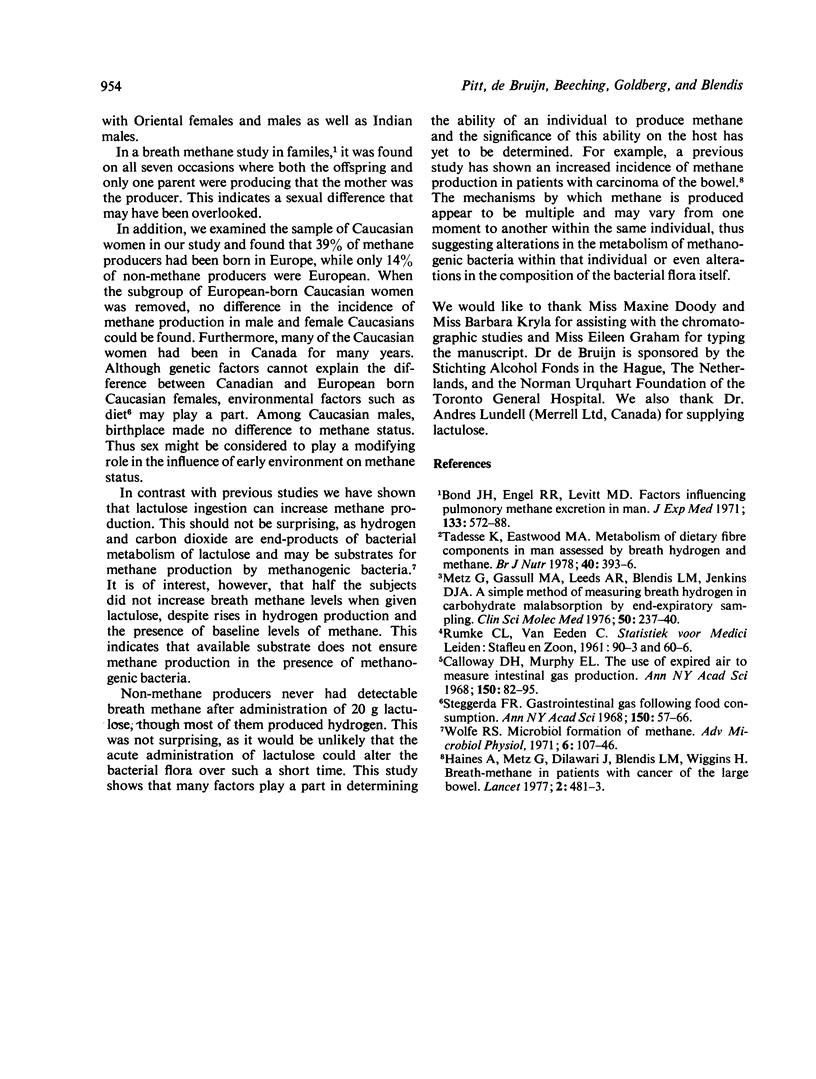Abstract
The prevalence of methane production in an adult population of 256 subjects was 41%, but it was significantly higher in females (49%), than males (33%). When the population was subdivided into ethnic groups. Caucasians (48%) and Black (45%) had significantly more methane producers than Orientals (24%) and Indians (32%). when the ethnic groups were analysed by sex, female Caucasians had the highers prevalence (58%), significantly more than Caucasian males, Oriental males, and females and Indian males. In contrast with previous studies, a single dose of lactulose was found to significantly increase breath methane concentrations in six out of 12 methane producers, but not in 25 non-methane producers from the population study. In conclusion, any studies on breath methane must take into consideration the ethnic origin of the subjects and, contrary to previous advice, substrate intake, especially undigestible carbohydrates. Furthermore, a single breath sample may miss up to one-fifth of methane producers.
Full text
PDF



Selected References
These references are in PubMed. This may not be the complete list of references from this article.
- Bond J. H., Jr, Engel R. R., Levitt M. D. Factors influencing pulmonary methane excretion in man. An indirect method of studying the in situ metabolism of the methane-producing colonic bacteria. J Exp Med. 1971 Mar 1;133(3):572–588. doi: 10.1084/jem.133.3.572. [DOI] [PMC free article] [PubMed] [Google Scholar]
- Calloway D. H., Murphy E. L. The use of expired air to measure intestinal gas formation. Ann N Y Acad Sci. 1968 Feb 26;150(1):82–95. doi: 10.1111/j.1749-6632.1968.tb19034.x. [DOI] [PubMed] [Google Scholar]
- Haines A., Metz G., Dilawari J., Blendis L., Wiggins H. Breath-methane in patients with cancer of the large bowel. Lancet. 1977 Sep 3;2(8036):481–483. doi: 10.1016/s0140-6736(77)91605-1. [DOI] [PubMed] [Google Scholar]
- Metz G., Gassull M. A., Leeds A. R., Blendis L. M., Jenkins D. J. A simple method of measuring breath hydrogen in carbohydrate malabsorption by end-expiratory sampling. Clin Sci Mol Med. 1976 Mar;50(3):237–240. doi: 10.1042/cs0500237. [DOI] [PubMed] [Google Scholar]
- Steggerda F. R. Gastrointestinal gas following food consumption. Ann N Y Acad Sci. 1968 Feb 26;150(1):57–66. doi: 10.1111/j.1749-6632.1968.tb19031.x. [DOI] [PubMed] [Google Scholar]
- Tadesse K., Eastwood M. A. Metabolism of dietary fibre components in man assessed by breath hydrogen and methane. Br J Nutr. 1978 Sep;40(2):393–396. doi: 10.1079/bjn19780136. [DOI] [PubMed] [Google Scholar]
- Wolfe R. S. Microbial formation of methane. Adv Microb Physiol. 1971;6:107–146. doi: 10.1016/s0065-2911(08)60068-5. [DOI] [PubMed] [Google Scholar]


